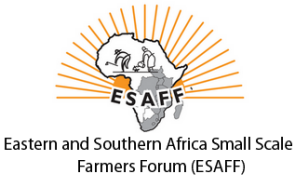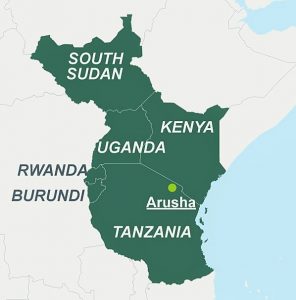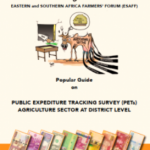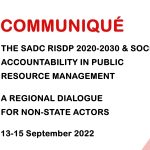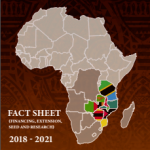How East African states differed on the national budgets
The East African Community (EAC) partner states of Burundi, Kenya, Rwanda, South Sudan, Tanzania, and Uganda are home to 172 million citizens of whom over 22 per cent are urban.
With a land area of 2.5 million square kilometres and a combined Gross Domestic Product of $172 billion, harmonisation of the partner states’ economic aspirations is very fundamental, writes AUSI KIBOWA.
Economic integration requires elimination of trade barriers and the coordination of monetary and fiscal policies, amongst others. Integration should also reduce prices that consumers pay for the final products as stiff competition amongst the region’s firms improves efficiency.
As the EAC becomes integrated to deeper levels of the Common Market and Monetary Union, the EAC Partners should lessen the trade barriers and ensure more economic and political harmonisation.
Partner states should have common trading policies, common infrastructure, free movement of goods and services, in addition to letting the factors of production to move freely. All these dynamics create a level-playing field in the economy, competitiveness is maximized and efficiency ensues.
Now at the level of a common market and with the EAC aspiring to achieve a monetary Union by 2024, it requires all the partner states to have a more or less similar economic outlook. In the macro-economic aspect, the EAC partner states need to have similar economic policy objectives for the short-run (annual budgets) and the medium term (five-year development plans).
A well-planned budget ensures economic stability and growth. The EAC partner states’ budgets are an expression of the Government’s public policy. The annual budgets inform the EAC public as to how their government plans to earn and spend. But most importantly, the budgets reflect the government’s balance sheet.
EAC budgets also detail the current state of the countries’ economies. This is why people remain glued to their televisions on budget day. Businesses draw their respective strategic direction for the financial year. Many EAC companies are also involved in infrastructure and roads development, agriculture and the rural sector. Information about these sectors is important to these companies.
On June 13, 2019 Kenya, Rwanda, Tanzania and Uganda presented their estimated national budgets to their respective parliaments. The East African Community (EAC) Finance Ministers continued the tradition of synchronized presentation of the member countries’ respective budgets.
“Transforming lives through industrialisation and job creation for shared prosperity” was the theme for the budgets of all four partner states as they emphasized the importance of these two key areas for development.
The EAC member countries registered positive and impressive GDP growth rates over the previous financial Year 2018/19. The EAC block grew by 5.9 per cent in the year 2018 on average with Rwanda registering the highest GDP growth rate of about 8.6 per cent followed by Tanzania, Kenya and Uganda. The performance of Burundi in terms of economic growth was significantly less than that of her peers at only 1.6 per cent.
Considering that EAC partner states have pledged to achieve their social-economic transformation through the regional framework, this analysis targets to examine how integrated the EAC partner states are from the standpoints of the budgets that their ministers of finance and planning read out. A few areas/aspects of the budgets are examined as hereunder:
Size of the budget estimates
The partner states presented ambitious budgets. Inevitably, funding these ambitious budgets called for creativity in coming up with the tax proposals in order to shore up revenues, especially given the debt stress that many of the countries face.
Kenya had a significantly larger budget than all the other three Partner States followed by Tanzania, Uganda and lastly Rwanda. The size of the Kenyan budget ($29.4bn) for 2019/2020 was more than Ugandan, Tanzanian and Rwandan budgets combined. Rwanda’s budget size was only $3.1bn.
Key budget priorities
Under their Budget Statements which were read out on the Budget days, the four partner states emphasized their key priority areas for the next Financial Year. There were some variations in the major priorities across the EAC partner states. Tanzania was the only member state that prioritised monitoring and evaluation as a key driver for better public service delivery.
Only Rwanda placed major focus on Public Financial Management in its budget with 30 per cent of its budget allocation going to this specific area. Kenya’s main focus was primarily on social sectors (categorised under the big-four agenda) unlike the other three partner states that placed major focus on key growth sectors.
Despite the few variations, there were general similarities amongst some key areas. All EAC Partner sates were harmonised in terms of prioritising their social sectors as they all placed major emphasis on education and heath sectors within their national budgets.
Alignment of the budget priorities
The national priority areas were to a medium extent aligned with the EAC’s medium term development priorities as articulated in its 5th EAC Development Strategy (2016/17 – 2020/21). Uganda was the only country whose national budget priorities were fully in line with the 5th EAC development strategy followed by Tanzania.
On the contrary, Kenya only conformed to one priority area hence clearly illustrating a lack of proper harmonisation with the region’s development frameworks.
Industrial development was the most prioritised focus area as three of the four partner states emphasized its relevance within their national budgets.
Alignment of macro-economic policy targets
In November 2013, the EAC agreed on the following set of macro-economic criteria to deliver the Region towards the realisation of the EAC Monetary Union by 2024 when the common currency will be put in place: keeping the budget deficit/GDP ratio (excluding grants) below 6per cent; Tax revenue/GDP ratios beyond 25 per cent; and, the cumulative sum of domestic and external borrowing as a ratio of GDP not to exceed 50 per cent.
According to their respective national budgets, none of the partner states projected their tax revenues for the financial year 2019/20 close to the regions’ set target of tax revenue-to-GDP ratio of above 25 per cent. This implies a lack of the requisite ambition to achieve the EAC monetary union by 2024.
Of all the four partner states, Kenya projected the highest tax revenue-to-GDP ratio of 18.3 per cent, followed by Uganda, Rwanda and lastly Tanzania 13.1 per cent. The Tax-to-GDP ratio exhibits the Partner States’ capacity to finance its programmes on a sustainable basis.
Without adequate domestic tax collection, partner states will always depend on external borrowing to meet their expenditures and this leads to countries incurring larger budget deficits.
Conclusion
Based on their national 2019/2020 budgets, it is evident that there is already moderate level of integration amongst partner states. This is can be undoubtedly noticed through their aligned budget themes that all placed major focus on industrialisation and job creation.
However, there is more need for the partner states to fully coordinate their economic policies and priorities. It was clearly noticeable that only Uganda highlighted economic priorities which are aligned to the regional framework. All the six Partner States still have a lot to do in order to achieve the set ambition of realising the EAC Monetary Union by 2014.
It is also urgent that partner states streamline their macro-economic policies to the targets already established within the EAC Vision 2050, for the long-run as well as the EAC five-year Development Strategies. The EAC countries also need to mobilise more tax revenues to finance their ambitious infrastructural needs.
The author is a final-year student, BSc. Economics, Makerere University.
Original article, AUSI KIBOWA: https://observer.ug/businessnews/61462-how-ea-states-differed-on-the-national-budgets
















